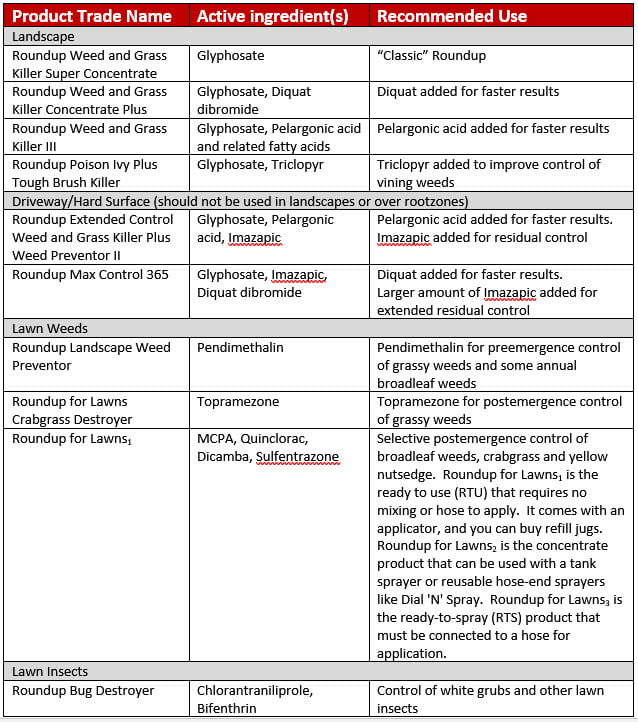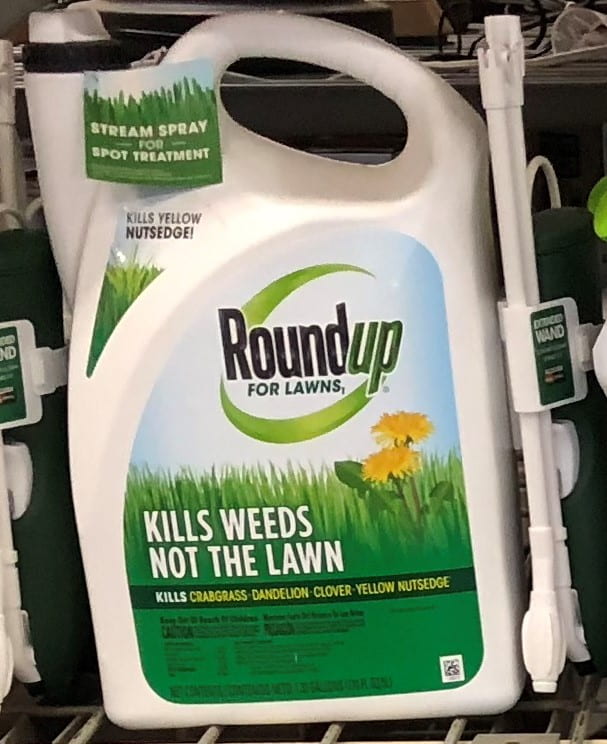From a consumer standpoint this could quite possibly be the worst product marketing of ALL TIME!
Roundup has been around for a long time. The active ingredient in “Roundup” is glyphosate. Many of us know “Roundup” as a non-selective herbicide – i.e. it will kill all plants it contacts.
So what’s the problem? With these products having a similar name, it’s quite possible to grab the wrong product from the shelf and thus risk harming or destroying the wrong (or all) plants.
The Solution. Always read the label! Products with similar names may have different active ingredients and therefore may not have the have the desired outcome.
Below is a general guide to the different Roundup products available to consumers. Note that for many of these products there may be ready to use (RTU) and/or concentrate formulations available with different ratios or percentages of the same active ingredients. Additional products are marketed for use in southern turfgrass.
Don’t be fooled by products that have a similar name . . . read the label!







 Photo Credit, Amy Stone
Photo Credit, Amy Stone